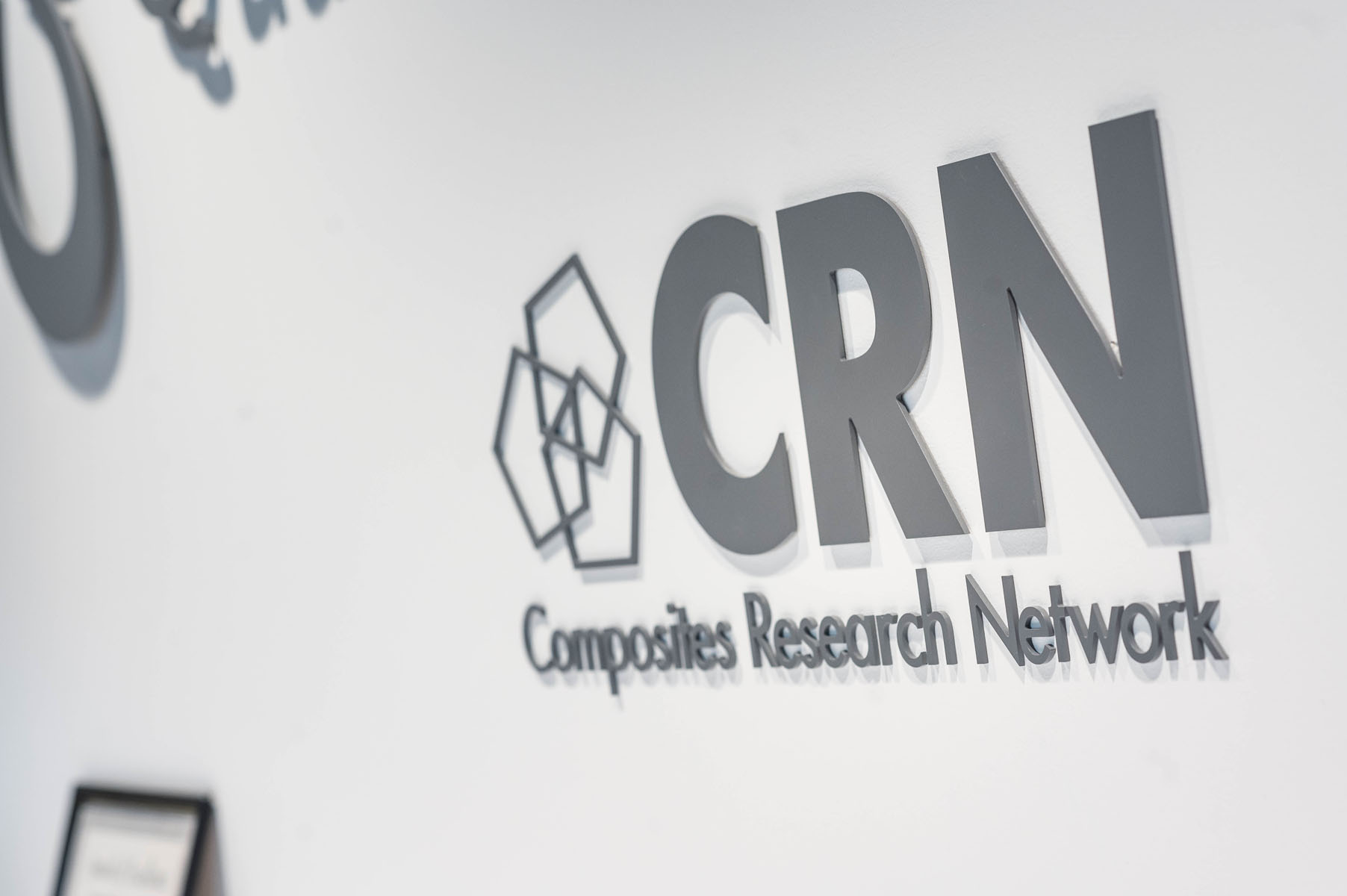The Composites Research Network (CRN) is a knowledge creation, translation and application network. Its primary function is to support and grow the composites industry within Canada and beyond.
CRN employs a structured approach reflecting the complementary roles of knowledge creation, training and education, and knowledge application and product development within the composites industry.
CRN brings together academic and industry knowledge:
- To solve specific challenges in design and fabrication
- To improve capabilities in manufacturing, maintenance, and repair
- To create best-practice solutions for sharing with industry partners
CRN provides long-term support for industry enrichment, job growth and increased economic output by:
- Bringing together academia and industry to solve manufacturing and design challenges
- Supporting small and medium sized enterprises (SMEs) across Canada to understand, define, and solve their technical challenges, with the goal of enhancing SME capabilities to conduct R&D, develop new products and processes, and grow their product lines for future expansion
- Creating and promoting composites knowledge translation through the Composites Knowledge Network
- Training new staff in best practice application on a continuous basis
- Operating in all Technology Readiness Level (TRL) ranges including basic research, program work, project work and engineering implementation
Member Benefits
CRN members have access to training facilities, materials and events. They also benefit from links to key national and international organizations and institutions. In addition, member companies can guide the priorities of the CRN and benefit from ongoing interaction with CRN personnel.
Private Sector Investment
The initiative encourages private-sector investment in research and development, an essential driver for industrial innovation and productivity.
What We Do
Filling the Gap Between Industry and Academia
CRN bridges the divide between academic activity and industry needs. Working with members and Canadian SMEs, the network leverages federal funding to support the composites industry by sharing current knowledge on composites manufacturing and design.
PROTECT the existing Knowledge in Practice
- Systematically capture manufacturing knowledge in practice
- Capture the state of the art
- Proactively identify gaps in knowledge, contradictions in knowledge, and needs in knowledge
- Proactively identify gaps in practice, contradictions in practice, and needs in practice.
- Reconcile the above conditions
- Provide a framework for companies to debrief retiring employees and capture proprietary knowledge without disclosing to a third party, including CRN
EXPLOIT the existing Knowledge in Practice
- Systematically work through common industrial manufacturing needs, typically by outcome/defect, and define best practice based on current knowledge
ADVANCE the future Knowledge in Practice
- Perform leading edge research and innovation, fundamental yet focussed on industrial needs
- Build on the prior steps of protecting and exploiting the current knowledge in practice, and advance the state of the art in a scientifically rigorous yet immediately applicable manner
Why Bridge the Gap? Knowledge in Practice
Knowledge translation/mobilization is about putting knowledge into the hands of the people that who can put it into practice. Knowledge in Practice aims to effectively harness the best of knowledge, be it simulation and analysis, testing, experience, or expert opinion on the manufacturing workflow at all stages: conceptual, trade study, detail design, as well as in production. By creating Knowledge in Practice Documents (KPDs) we are translating university research and bringing it into industry for practical application and implementation.
For more information on KPDs, please visit the Composites Knowledge Network.
Why Bridge the Gap? Technology Readiness Levels
Technology Readiness Levels (TRLs) helped NASA get equipment into space, from ideas at the bench into functional technologies on space vehicles. Nine levels (TRL1 through TRL9) show the stages in development from basic research, system test and on to launch and operations. However, experience shows that many innovative ideas come to a halt between TRL4 (research establishing feasibility) and TRL7 (system/subsystem development).
This ‘valley of death’ is where the lack of pre-commercial funding and technical challenges on transitioning into deployment stifle many innovative ideas. A major reason is that academic research often hands over a project too early, without assessing commercial viability or benefit to the industry.
Closer collaboration between industry and researchers within the CRN functions as a bridge between basic research and industrial engineering application.
Moving the process efficiently through TRLs 4 to 9 will maximise development output for feasible industrial application.
In addition to core CRN activities, we are also involved in the following initiatives:



